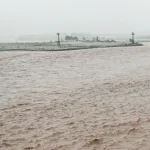After decades of decline, the most unfortunate thing has happened and that is the increase in global prevalence of undernourishment, a component of the Global Hunger Index
The world’s hunger is getting ridiculous. There is more fruit in a rich man’s shampoo than in a poor man’s plate. Does this quote of the yester years still hold relevance? The latest report of Global Hunger Index GHI 2022 raises serious question marks on our efforts towards ensuring food and nutritional security for all. The Global Hunger Index is a tool designed to comprehensively measure and track hunger at global, regional and national levels reflecting multiple dimensions of hunger over time. GHI is an annual Report Jointly published by Concern Worldwide and Welthungerhilfe. Concern Worldwide is an international humanitarian organisation dedicated to tackling poverty and suffering in the world’s poorest countries. Welthungerhilfe is one of the largest private aid organisations in Germany, independent of politics and religion. It was first produced in 2006. It is published every October. The 2022 edition marks the 17th edition of the GHI.
The report that aims to comprehensively measure and track hunger at the global, regional, and country levels is calculated on the basis of four indicators viz undernourishment referring to the share of the population with insufficient caloric intake; Child Wasting i. e share of children under age five who have low weight for their height reflecting acute under-nutrition; Child Stunting depicting the share of children under age five who have low height for their age reflecting chronic under-nutrition and finally child mortality describing the mortality rate of children under the age of five. Based on the values of the four indicators, the GHI determines hunger on a 100-point scale where 0 is the best possible score (no hunger) and 100 is the worst. Each country’s GHI score is classified by severity, from low to extremely alarming. Undernourishment data are provided by the Food and Agriculture Organisation and Child Mortality data are sourced from the UN Inter-agency Group for Child Mortality Estimation (UN IGME).Child wasting and stunting data are drawn from the joint database of UNICEF, the World Health Organization (WHO) and the World Bank among others.
After decades of decline, the most unfortunate thing has happened and that is the increase in global prevalence of undernourishment, a component of the Global Hunger Index. This shift can be attributed to many factors and can be taken as a leading indicator of reversals in other measures of hunger. Inequality and access to resources between regions, countries, districts, and communities is all pervasive and left unchecked. This ultimately has the potential to keep the global community away from achieving the Sustainable Development Goal (SDG) mandate to ‘leave no one behind’. Africa, South of the Sahara and South Asia are the world regions where hunger levels are highest. Hunger in both regions is considered serious. The fight against hunger is dangerously off track. Based on current GHI projections, the world as a whole and 47 countries in, particular – will fail to achieve a low level of hunger by 2030.Food security is under assault on multiple fronts. Worsening conflict, weather extremes associated with global climate change, and the economic and health challenges associated with the Covid-19 pandemic are all driving hunger.
The Statistics: On the severity scale, the countries with a score of less than or equal to 9.9 are in low level of hunger category, those with score in between 10 to 19.9 fall under moderate category of hunger and those with a score of 20-34.9 are categorized as countries with serious levels of hunger. India with a score of 29.1 has a level of hunger that is serious. With the 2022 report, India has slipped 6 positions from its 2021 rank of 101 making it the country having the highest child wasting rate among children. What is worse is that India is ranked behind most of its neighbouring countries. Pakistan is at 99th spot, Sri Lanka at 64th, Nepal at 81st and Bangladesh at 84th in the GHI 2002. The only country in South Asia that performs worse than India on the index is Afghanistan with 109th rank. Although, India has seen improvement in child stunting and child mortality between 2014 and 2022, but undernourishment has increased. The report claims that child stunting has declined from 38.7% to 35.5%.Child mortality has also dropped from 4.6% to 3.3%. On the other hand, prevalence of undernourishment has also risen in the country from 14.6% in 2018-2020 to 16.3% in 2019-2021.It implies that 224.3 million people in India (out of 828 million globally) are considered under-nourished. India’s child wasting rate (low weight for height) at 19.3% is worse than the levels recorded in 2014 (15.1%) and even 2000 (17.15%).
The data raises serious question mark on our efforts towards the various pro farming and farmer initiatives. Although Union Ministry of Women and Child Development, Government of India reverted back issuing a criticism to the latest GHI ranking (2022) in which India’s rank was lowered to 107, saying that, ‘consistent effort is yet again visible to taint India’s image as a Nation that does not fulfil the food security and nutritional requirements of its population’. The government said that the index is an erroneous measure of hunger and suffers from serious methodological issues. The report is not only disconnected from ground reality but also chooses to deliberately ignore efforts made by the Government to ensure food security for the population especially during the Covid Pandemic.
Despite the GHI ranking and trailing on some vital indicators, there is no doubt that the government and its different agencies have put in lot of efforts for making agriculture profitable and sustainable. This is evident from the various flagship initiatives of the central and respective state government which have started paying dividends in the form of increasing incomes for the farming community, positive impact on environment and employment generation. It is the result of the government’s commitment of Doubling Farmers Income by 2022 that income of thousands of farmers has more than doubled. The profitability in this sector has motivated the young generation to return to their roots. Many of the highly qualified peoples working abroad have left their jobs and ventured into various agriculture related enterprises in the country. Backed up by a pro entrepreneurial ecosystem in the country, these youths are now employment generators providing employment to many others. Scheme like Soil Health Cards, Promotion of organic Farming, Parampragat Krishi Vikas Yojana (PKVY), Zero Budget Natural Farming have improved the soil health and minimized the harmful impact on our environment. POSHAN Abhiyan the largest nutritional security programme in the country has led to revival of the lost and neglected crops like various types of cereals. The cereals are a rich source of various nutrients and moreover their cultivation is very less as compared to other foodgrains like Maize, Wheat and Paddy. Fortification of foods is also being taken up by the development and release of various fortified varieties of different crops. It will definitely go a long way in ensuring nutritional security for all. Agri-startups have unleashed an entrepreneurial revolution in the country. The youths after upgrading their skills through different skill development programmes are changing the fortunes of agriculture in the country. With various marketing reforms in the form of e-NAM, FPOs and branding and certification, it is now [possible to sell the produce form one region of the country to all across the globe. With schemes like PMKISAN which provide an amount of six thousand to the farming community in three instalments per year, farmers now do not depend upon the land lords and money lenders for purchasing inputs at the time of sowing of crops.
It is due to all these efforts that our stores and go downs were full and the government is still providing food grains to the poor and needy free of cost even as the globe has started recovering from COVID-19 pandemic. Let us hope that with the hard work of our farming community and the dedication and commitment of scientific community, we will be able to overcome all the shortcomings and would emerge as a leader in world as far as food and nutritional security is concerned.
(Author is a scientist at SKUAST-K; can be reached at [email protected])





